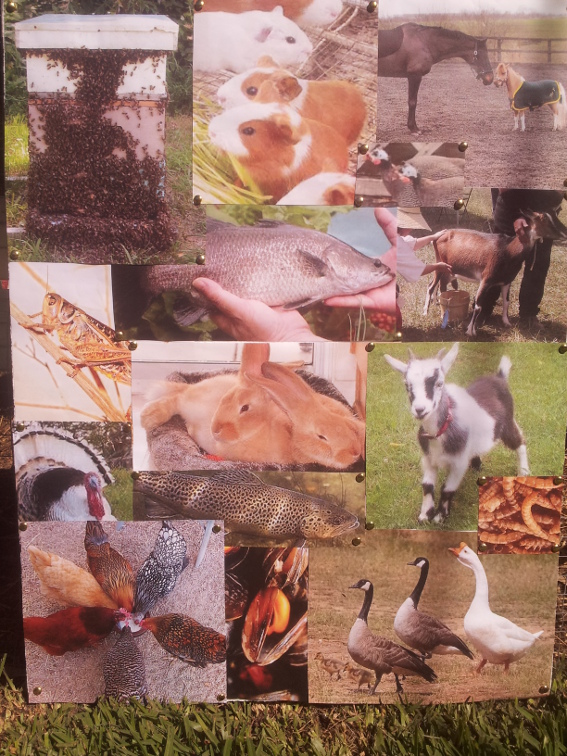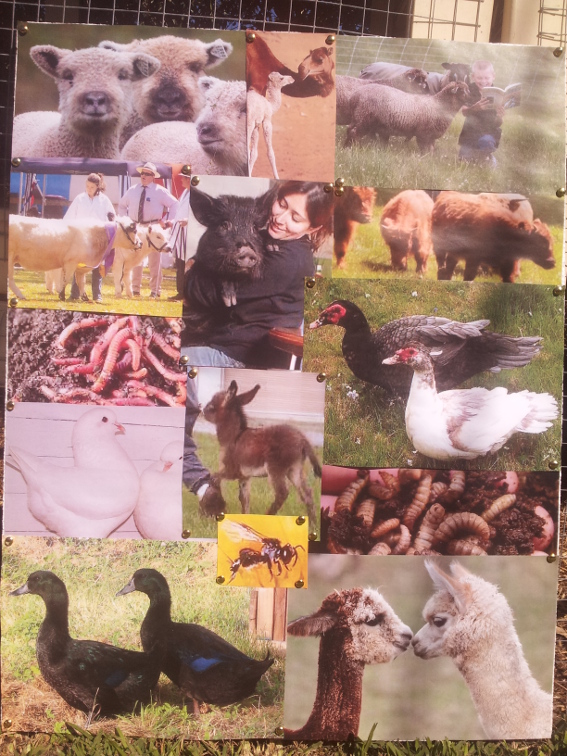On Saturday, I went along to the Less is More Festival – it’s an annual community festival & conference which supports skill-sharing and practical sustainability. I went for the first time last year, although the festival has been running for four years now.
 Last year I went along to see what it was like, and enjoyed it a lot. This year I wanted to get more involved, so I volunteered to give a presentation on urban livestock options for food security.
Last year I went along to see what it was like, and enjoyed it a lot. This year I wanted to get more involved, so I volunteered to give a presentation on urban livestock options for food security.
The gist of my talk was that most people, even those with very small back yards or even only windowsills and apartment balconies, could keep animals if they wanted to. “Livestock” isn’t just cows and sheep, it refers to any animal that we keep for a purpose.
Chickens are the obvious backyard livestock, but people forget about ducks, geese, turkeys, guinea fowl (although they’re too noisy for many urban areas), quail, and pigeons. Ducks and quail will give about as many eggs as chickens will, and all those birds are excellent choices if you want to raise poultry for meat.
In the same vein, people often don’t think about the effort involved in keeping an animal. Goats (or even miniature cows) are good to keep if you use a lot of milk, or you want to make cheese – but then you have to milk them every day, twice a day. Every day, which means no holidays unless you can find someone to take care of your milking for you. And then there are the baby goats or calves – do you send them to the abattoir for meat, or try to find homes for them?
 I put together a set of notes on the pros and cons, and the needs and products of all the types of animal I could think of that might work as back yard livestock – chickens, ducks, geese, guinea fowl, turkeys, pigeons, quail, miniature pigs, miniature cows, goats, sheep, rabbits, guinea pigs, compost worms, honeybees, native stingless bees, miniature ponies and donkeys, camels, alpacas, black soldier flies, mealworms, crickets, fish, and yabbies and marron. It’s a basic permaculture technique, to analyse what something provides for you, and what it needs from you in a system.
I put together a set of notes on the pros and cons, and the needs and products of all the types of animal I could think of that might work as back yard livestock – chickens, ducks, geese, guinea fowl, turkeys, pigeons, quail, miniature pigs, miniature cows, goats, sheep, rabbits, guinea pigs, compost worms, honeybees, native stingless bees, miniature ponies and donkeys, camels, alpacas, black soldier flies, mealworms, crickets, fish, and yabbies and marron. It’s a basic permaculture technique, to analyse what something provides for you, and what it needs from you in a system.
Overall, I think it went well. I only got through discussing three species (guinea pigs, miniature pigs, and ducks), but everyone seemed to be interested; people asked questions, and took notes. It’s an interesting experience, trying to distil so much reading and research into a cohesive presentation.
For anyone who’s interested, here are the notes on the various animals.